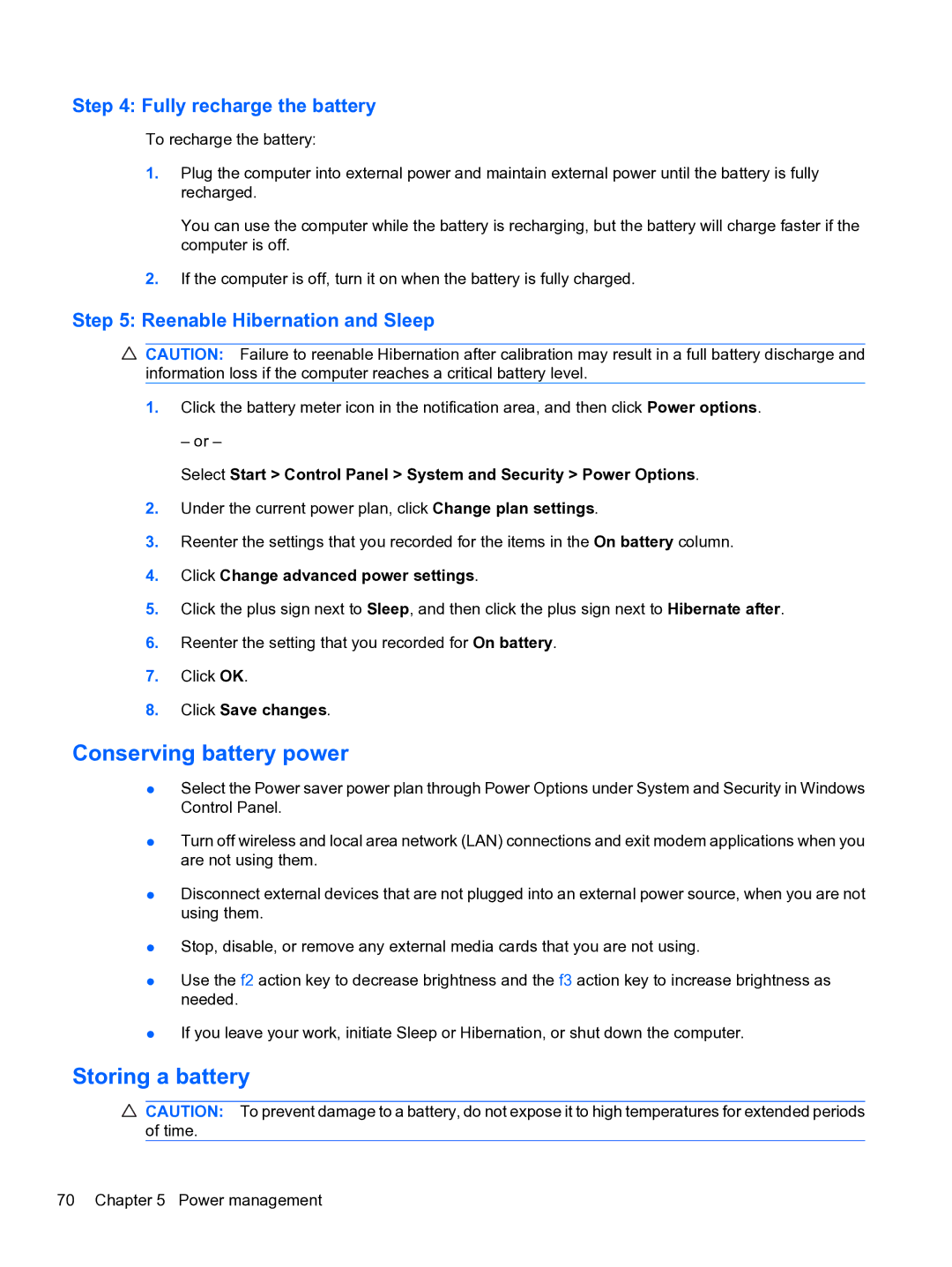
Step 4: Fully recharge the battery
To recharge the battery:
1.Plug the computer into external power and maintain external power until the battery is fully recharged.
You can use the computer while the battery is recharging, but the battery will charge faster if the computer is off.
2.If the computer is off, turn it on when the battery is fully charged.
Step 5: Reenable Hibernation and Sleep
CAUTION: Failure to reenable Hibernation after calibration may result in a full battery discharge and information loss if the computer reaches a critical battery level.
1.Click the battery meter icon in the notification area, and then click Power options.
– or –
Select Start > Control Panel > System and Security > Power Options.
2.Under the current power plan, click Change plan settings.
3.Reenter the settings that you recorded for the items in the On battery column.
4.Click Change advanced power settings.
5.Click the plus sign next to Sleep, and then click the plus sign next to Hibernate after.
6.Reenter the setting that you recorded for On battery.
7.Click OK.
8.Click Save changes.
Conserving battery power
●Select the Power saver power plan through Power Options under System and Security in Windows Control Panel.
●Turn off wireless and local area network (LAN) connections and exit modem applications when you are not using them.
●Disconnect external devices that are not plugged into an external power source, when you are not using them.
●Stop, disable, or remove any external media cards that you are not using.
●Use the f2 action key to decrease brightness and the f3 action key to increase brightness as needed.
●If you leave your work, initiate Sleep or Hibernation, or shut down the computer.
Storing a battery
CAUTION: To prevent damage to a battery, do not expose it to high temperatures for extended periods of time.
70 Chapter 5 Power management
